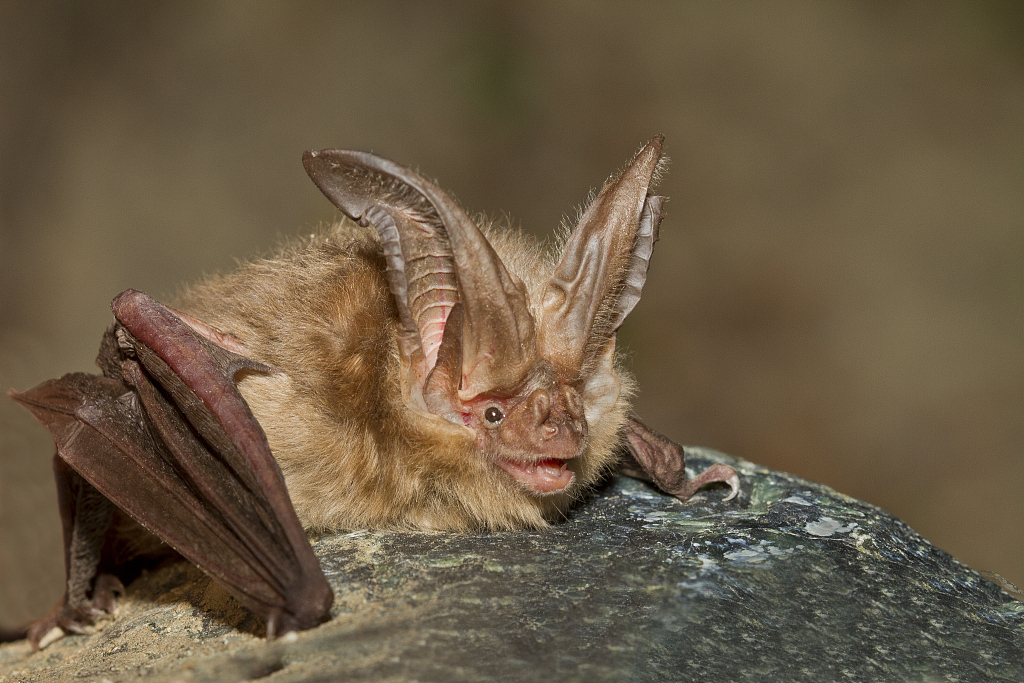As the novel coronavirus outbreak spreads across China, one animal, often related to vampires, darkness and ugliness, has made frequent appearances on social media.
That is bats.

The Townsend's big-eared bat is an animal you don't want to meet in real life. /VCG Photo
The Townsend's big-eared bat is an animal you don't want to meet in real life. /VCG Photo
Bats are natural reservoirs for a large number of viruses such as Nipah, Hendra, Ebola, and SARS (severe acute respiratory syndrome). They carry more deadly diseases than pretty much any other animal. Why and how do these creatures spread and survive these viruses? Here are some of the facts that might help shed light on the issue.
1. The only mammal that can fly
While others can glide, bats are the only mammals that are capable of continuous flight. During flight, a bat's heartbeat rate can reach up to 1,000 beats per minute. The Mexican free-tailed bats, thought to be the fastest animal on earth, can fly over a level surface at a speed of up to 160 kilometers per hour. This allow them to travel a large distance in a short amount of time.
2. Small-sized but with long lives
The average lifespan of a bat varies, but some species like the brown bat can live to be 30 years old, some species can live up to 40 years. Considering that other small mammals, such as rats can live only two years or so, it's impressive. The long lifespan allows bats to fly more and spread more viruses.
3. Loves company
Bats are highly social animals. They love to roost together, even with other species. Some bats colonies, such as the Bracken Bat Cave in Texas, U.S., can shelter millions of bats. When different kinds of bats roost together in close quarters, viruses spread very fast, between both individuals and animal species.
4. Self-healing 'superpower'
The reason why bats are resilient to the viruses they carry lies in their genes. Bats have a super high heartbeat rate that can reach up to 1,000 beats per minute during flight. When mammals produce that huge amount of energy needed for flight, they also produce a large amount of waste products that damage the DNA. However, after millions of years of evolution, bats developed a "superpower" that helps repair the damaged DNA and level up their defenses for viruses.
The exceptional immune system has trained viruses at the same time, making them possibly more deadly to humans. In the last 50 years, outbreaks of viruses around the globe have been largely due to human invasion of bats' territories for commercial farms and cropping fields.
One big favor we can do to our fellow human is to stay away from the natural habitats of bats and other wildlife, and certainly not eat them.
(If you want to contribute and have specific expertise, please contact us at nature@cgtn.com.)